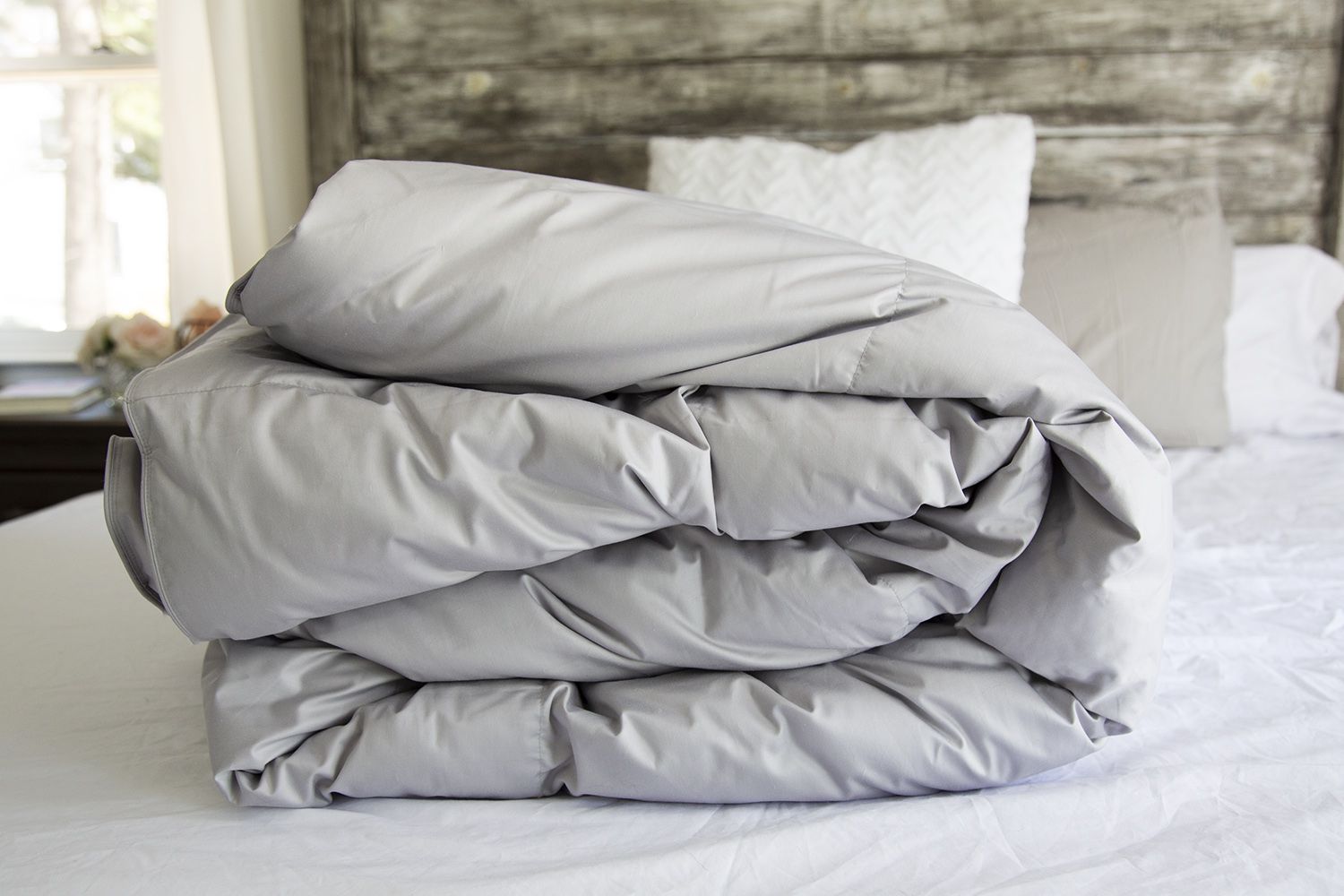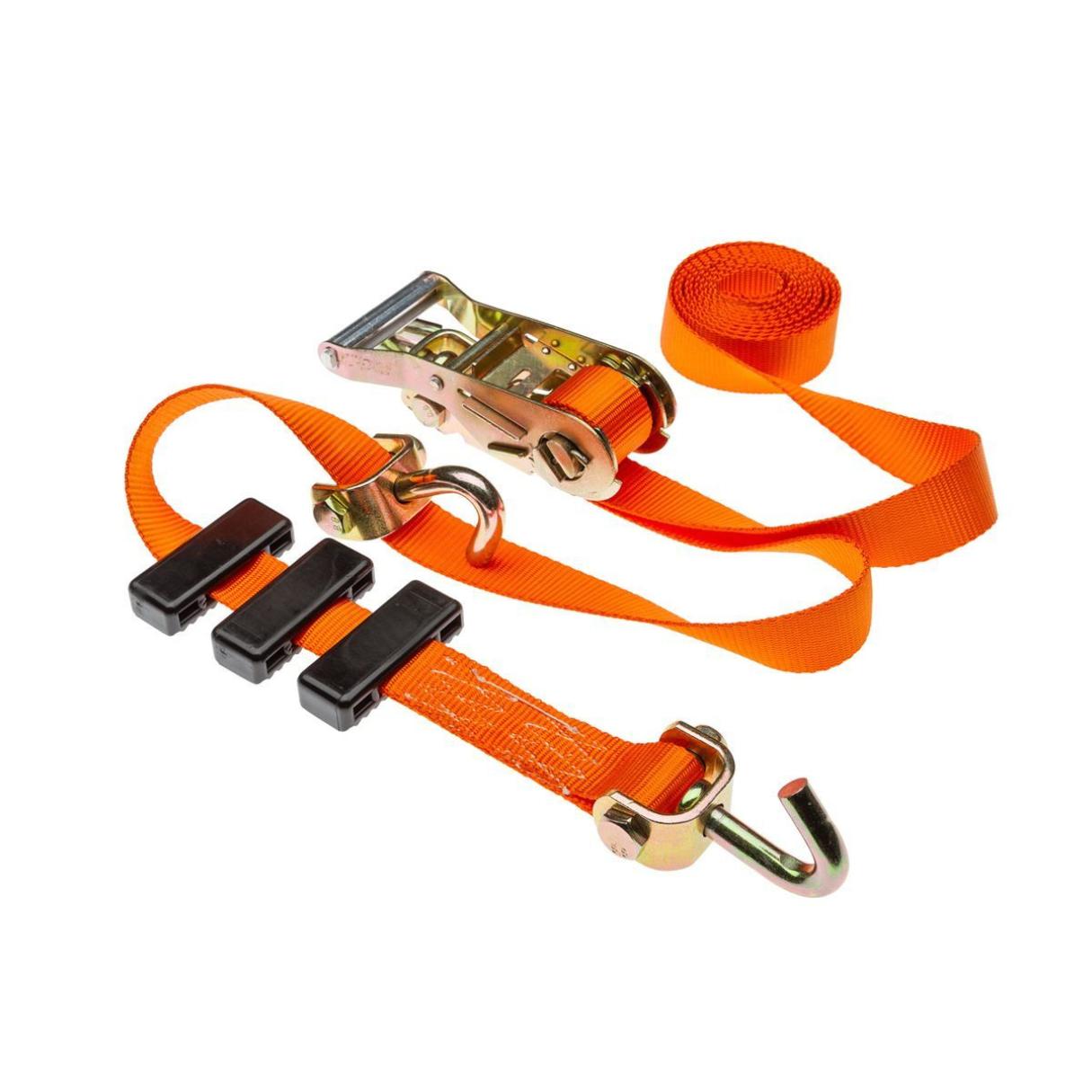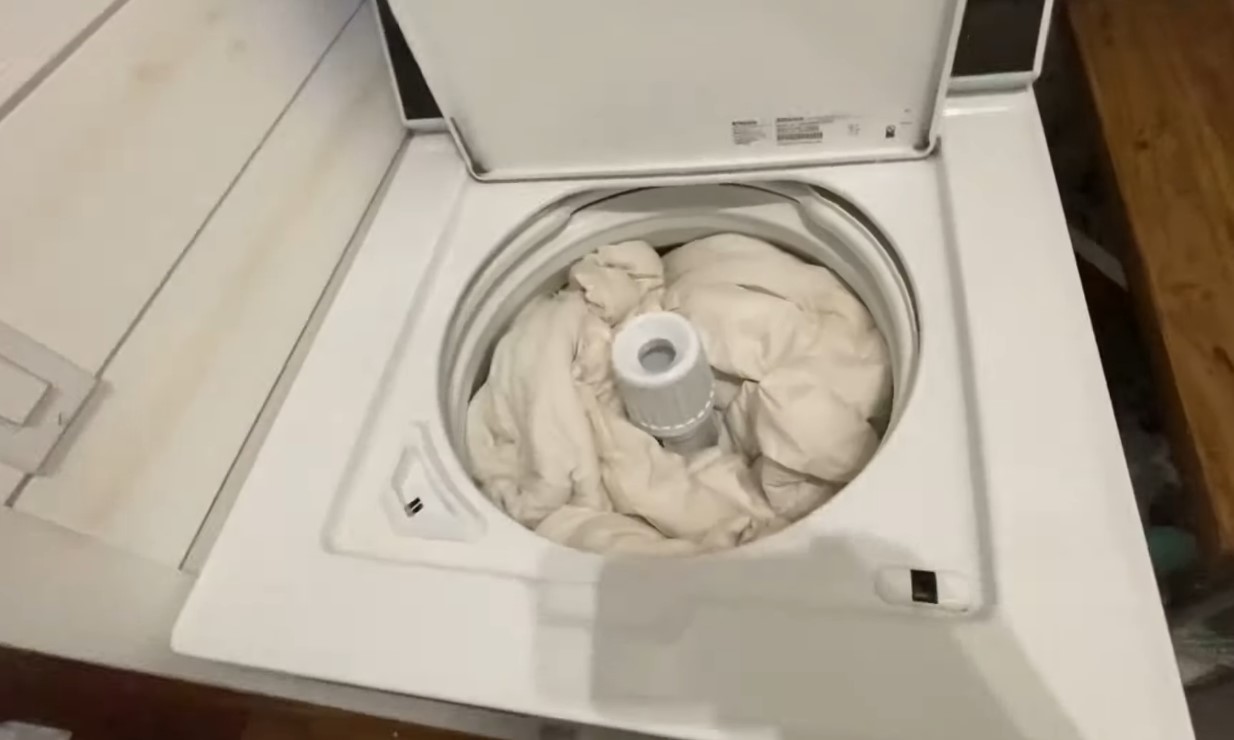

Articles
How To Store A Down Comforter
Modified: August 27, 2024
Learn the best way to store a down comforter to keep it fresh and fluffy. Check out our helpful articles on down comforter storage tips and tricks.
(Many of the links in this article redirect to a specific reviewed product. Your purchase of these products through affiliate links helps to generate commission for Storables.com, at no extra cost. Learn more)
Introduction
Welcome to the comprehensive guide on how to store a down comforter. A down comforter is a luxurious and cozy bedding item that requires special care during storage to maintain its loftiness, insulation, and overall quality. Whether you are transitioning between seasons or need to store your comforter temporarily, following the right storage techniques is essential for keeping it in optimal condition.
In this article, we will walk you through the entire process of storing a down comforter, from choosing the right storage space to cleaning, folding, and protecting the comforter during storage. By following these steps, you will ensure that your favorite bedding item remains fresh, fluffy, and ready to provide you with warmth and comfort whenever you need it.
So, let’s dive in and learn how to properly store a down comforter!
Key Takeaways:
- Proper storage of a down comforter involves choosing the right storage space, cleaning and preparing the comforter, using proper folding techniques, and protecting it from potential damage. Following these steps ensures the comforter remains fresh, fluffy, and ready for use.
- Long-term storage of a down comforter requires additional measures such as labeling and dating the storage container, rotating and airing out the comforter, avoiding extreme temperature fluctuations, keeping it away from pets and children, and following the manufacturer’s recommendations. These steps help preserve the quality and longevity of the comforter.
Choosing the Right Storage
When it comes to storing a down comforter, the first step is to choose the right storage area. The ideal storage space should be cool, dry, and well-ventilated to prevent moisture buildup, mold, and mildew. Here are some factors to consider when selecting the right storage location:
- Climate Control: It is best to store your down comforter in a climate-controlled area, such as a closet or a storage unit with temperature and humidity control. Extreme temperatures and humidity can damage the feathers and reduce the overall quality of the comforter.
- Light Exposure: Direct sunlight can cause your comforter’s fabric to fade over time. Choose a storage area away from windows or use a light-blocking cover to protect it from harmful UV rays.
- Space: Ensure that the storage area is spacious enough to accommodate the size of your comforter without compressing it too tightly. Squishing or cramming a down comforter can cause the feathers to lose their fluffiness and loft.
- Cleanliness: The storage space should be clean and free from any potential contaminants or odors. Avoid storing your comforter in areas prone to dust, pet dander, or other allergens that can affect its cleanliness.
Consider these factors carefully to find the most suitable storage space for your down comforter. Once you have identified the storage area, it’s time to ensure that your comforter is clean and prepared for storage.
Cleaning and Preparing the Comforter
Prior to storing your down comforter, it is crucial to clean and prepare it properly. Cleaning ensures that any dirt, oils, or stains are removed, while proper preparation helps maintain the quality of the comforter during storage. Here are the steps to clean and prepare your comforter:
- Check the Care Instructions: Before cleaning your down comforter, refer to the care instructions provided by the manufacturer. Some comforters may be machine washable, while others require professional cleaning. Follow the recommended cleaning method to avoid damaging the comforter.
- Machine Washing: If your down comforter is machine washable, use a front-loading washing machine on a gentle cycle. Use a mild detergent specifically designed for down products. Avoid using bleach or fabric softeners as they can damage the feathers. Ensure that the comforter has enough space to move freely in the machine.
- Professional Cleaning: If your down comforter requires professional cleaning, take it to a reputable cleaner experienced in handling down products. They will have the necessary equipment and expertise to clean and preserve the comforter effectively.
- Drying: After washing, thoroughly dry the comforter to prevent moisture retention. If using a home dryer, use a low-heat or air-only setting and add a few clean tennis balls or dryer balls to help fluff the down. Alternatively, hang the comforter outdoors or in a well-ventilated area to air dry.
- Fluffing: Once dry, give your down comforter a good shake to fluff up the feathers. This helps restore its loftiness and ensure even distribution of the down filling.
- Spot Cleaning: If there are any stains or spills on the comforter, spot clean them as soon as possible. Use a mild detergent or a mixture of water and vinegar, and gently dab the stained area with a clean cloth. Avoid rubbing, as it can spread the stain or damage the fabric.
- Allowing Sufficient Time: Make sure your down comforter is completely dry and free from any moisture before storing it. This is vital to prevent mold or mildew growth during storage.
By following these cleaning and preparation steps, you will ensure that your down comforter is fresh, clean, and ready for storage. The next step is to fold and store it properly.
Folding Techniques for Storage
Proper folding is essential to prevent unnecessary creases, maintain the loftiness of the down, and save space when storing your comforter. Here are some folding techniques to consider:
- Puff Fold: This is a simple technique that helps maintain the fluffiness of your comforter. Lay the comforter flat on a clean surface and fold it in half lengthwise. Then, fold it in half widthwise. You can repeat this process once or twice, depending on the size of your comforter, until you have a compact square or rectangle shape.
- Roll-Up Fold: This technique is ideal for larger down comforters. Lay the comforter flat and start rolling it up tightly from one end. Once rolled, use straps or cords to secure it in place to prevent it from unrolling. This method helps reduce creases and allows for easy storage and transport.
- Accordion Fold: This technique works well for medium-sized comforters. Lay the comforter flat and fold it in thirds, accordion-style. Start by folding one-third of the comforter over towards the center. Then, fold the other third over the first fold. This folding method creates a compact and uniform shape.
- Vacuum Storage Bags: If you need to save even more space, consider using vacuum storage bags. Place your folded or rolled-up comforter inside the bag and use a vacuum cleaner to remove the air, compressing the comforter. This method minimizes the size of the comforter and protects it from dust, moisture, and pests.
Choose the folding technique that works best for your comforter’s size and your storage space. Remember to avoid folding the comforter too tightly, as this can compress the down and affect its fluffiness. Once folded, it’s time to protect your comforter during storage.
Store your down comforter in a breathable cotton storage bag to prevent moisture buildup and mildew. Avoid plastic bags, which can trap moisture.
Protecting the Comforter in Storage
To ensure that your down comforter remains in pristine condition during storage, it’s important to take measures to protect it from any potential damage. Here are some tips to help protect your comforter:
- Use a Storage Bag or Container: Place your folded or rolled-up comforter inside a breathable storage bag or container. Choose a bag or container made of natural materials, such as cotton or linen, as they allow for proper airflow. Avoid using plastic bags or containers, as they can trap moisture and lead to mold growth.
- Adding Natural Repellents: To keep pests away from your comforter, add natural repellents such as cedar chips, lavender sachets, or dried orange peels to the storage bag or container. These items emit scents that help deter insects and add a pleasant aroma to your comforter.
- Avoid Storing in Direct Contact with the Floor: Place your comforter on a shelf or elevate it off the ground. This helps prevent moisture absorption and potential damage from any spills or leaks that may occur on the floor.
- Avoid Using Plastic Wrap: While it may seem like a quick and easy option, avoid wrapping your comforter in plastic wrap. Plastic wrap can trap moisture and cause mildew to form on the down-filled comforter.
- Regularly Check on the Comforter: Periodically inspect your stored comforter for any signs of moisture, pests, or damage. If you notice any issues, take appropriate measures to address them immediately to prevent further damage.
By taking these protection measures, you can ensure that your comforter remains clean, fresh, and free from any potential damage during its time in storage.
Tips for Long-Term Storage
If you’re planning to store your down comforter for an extended period, such as during the summer months or while moving, it’s important to follow these additional tips for long-term storage:
- Label and Date: Clearly label the storage bag or container with the contents and the date of storage. This will help you keep track of how long the comforter has been stored and make it easier to locate it when needed.
- Rotate and Air Out: Every few months, take the opportunity to rotate and air out your stored comforter. Remove it from the storage bag or container and gently shake and fluff it to maintain its loftiness. This helps prevent the down from becoming stagnant and ensures even distribution.
- Avoid Extreme Temperature Fluctuations: If storing your comforter in a place where temperature fluctuations occur, such as an attic or basement, consider using additional insulation or a climate-controlled storage unit to protect it from extreme heat or cold that could potentially damage the fibers.
- Keep Away from Pets and Children: Store your down comforter in a location that is inaccessible to pets and children. Although down comforters are durable, they can still be susceptible to damage if pets or little ones get their paws or hands on them.
- Follow Manufacturer’s Recommendations: Always refer to the manufacturer’s recommendations for long-term storage, as some comforters may require specific care or storage conditions. Following these instructions will help preserve the quality and longevity of your down comforter.
By implementing these tips, you can ensure that your down comforter remains in excellent condition throughout its long-term storage.
Conclusion
Storing a down comforter properly is essential to maintain its quality, loftiness, and overall comfort. By following the steps outlined in this comprehensive guide, you can ensure that your down comforter remains fresh, clean, and ready for use whenever you need it.
Remember to choose the right storage space that is cool, dry, and well-ventilated. Clean and prepare your comforter using the appropriate method, whether it’s machine washing or professional cleaning. Utilize proper folding techniques to avoid unnecessary creases and save space. Protect your comforter during storage by using breathable storage bags or containers and adding natural repellents to deter pests. Finally, follow the tips for long-term storage to maintain the quality of your comforter over an extended period.
By taking the time and effort to store your down comforter properly, you are ensuring that it will provide you with the same level of comfort and warmth for years to come. So, follow these guidelines and enjoy the luxurious coziness of your down comforter whenever the need arises!
Frequently Asked Questions about How To Store A Down Comforter
Was this page helpful?
At Storables.com, we guarantee accurate and reliable information. Our content, validated by Expert Board Contributors, is crafted following stringent Editorial Policies. We're committed to providing you with well-researched, expert-backed insights for all your informational needs.















0 thoughts on “How To Store A Down Comforter”